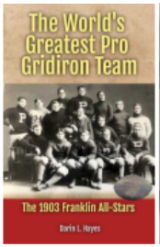- Witness a year of upheaval as college football navigates rule changes while the NFL sees a familiar championship battle with a different victor.
-
The 1953 football season was a fascinating study in contrasts, marked by significant shifts in both the collegiate and professional landscapes. In the college ranks, the NCAA's dramatic revocation of the two-platoon system and unlimited substitutions forced a return to the restrictive one-platoon era, fundamentally altering gameplay and coaching strategies. Despite this seismic change, several dominant teams emerged, with Maryland finishing undefeated in the regular season and claiming the top spot in the final AP Poll, though they would fall to Oklahoma in the Orange Bowl. Meanwhile, Notre Dame, boasting Heisman Trophy winner Johnny Lattner, also enjoyed an exceptional 9-0-1 season and was recognized as national champions by multiple selectors. This year of transition set the stage for a new era of college football.
The NFL season of 1953 saw familiar powers clashing for supremacy. The Cleveland Browns, led by the prolific passing of Otto Graham (who led the league in passing yards), once again dominated the Eastern Conference with an impressive 11-1 record. They were poised for another championship showdown, their fourth consecutive appearance since joining the league in 1950. In the Western Conference, the Detroit Lions, spearheaded by quarterback Bobby Layne and running back Doak Walker, emerged as champions with a strong 10-2 record. This set up a highly anticipated rematch of the 1952 NFL Championship, with the Lions looking to defend their title against a Browns team hungry for revenge. The stage was set for another thrilling chapter in the burgeoning rivalry between these two powerhouse franchises.
The 1953 Season History
The History of American football made in 1953
- ‣
NFL 1953
Our Latest Book is Out
Explore the 1925 NFL season and the saga of an NFL franchise the Pottsville MaroonsMarooned:The Rise, The Fall, and The Redemption of the NFL's Pottsville Maroons
Greatest Pro Team
Who was the MOST DOMINANT team in Pro Football History? We have the answer in the latest Pigskin Dispatch book The World's Greatest Pro Gridiron Team
We have placed some product links on this page. If you purchase by clicking on them, we will get a commission to use to help with operating costs.
Proud to Support The Professional Football Researchers Association
To learn more about joining the go to The Official PFRA Website.
_________________________
Orville Mulligan: Sports Writer
We invite you to take a ride through 1920's sports history in the audio drama that takes the listener through the sounds and legendary events of the era through the eyes of a young newspaper journalist. You will feel like you were there!
Brought to you by Number 80 Productions and Pigskin Dispatch
_________________________
Sports Jersey Dispatch
If you like remembering players of the NFL by their numbers then you may also enjoy going uniform number by number in othre team sports as well. We have it for you on our other website in baseball, basketball, hockey and more on the Sports Jersey Dispatch.
_________________________






